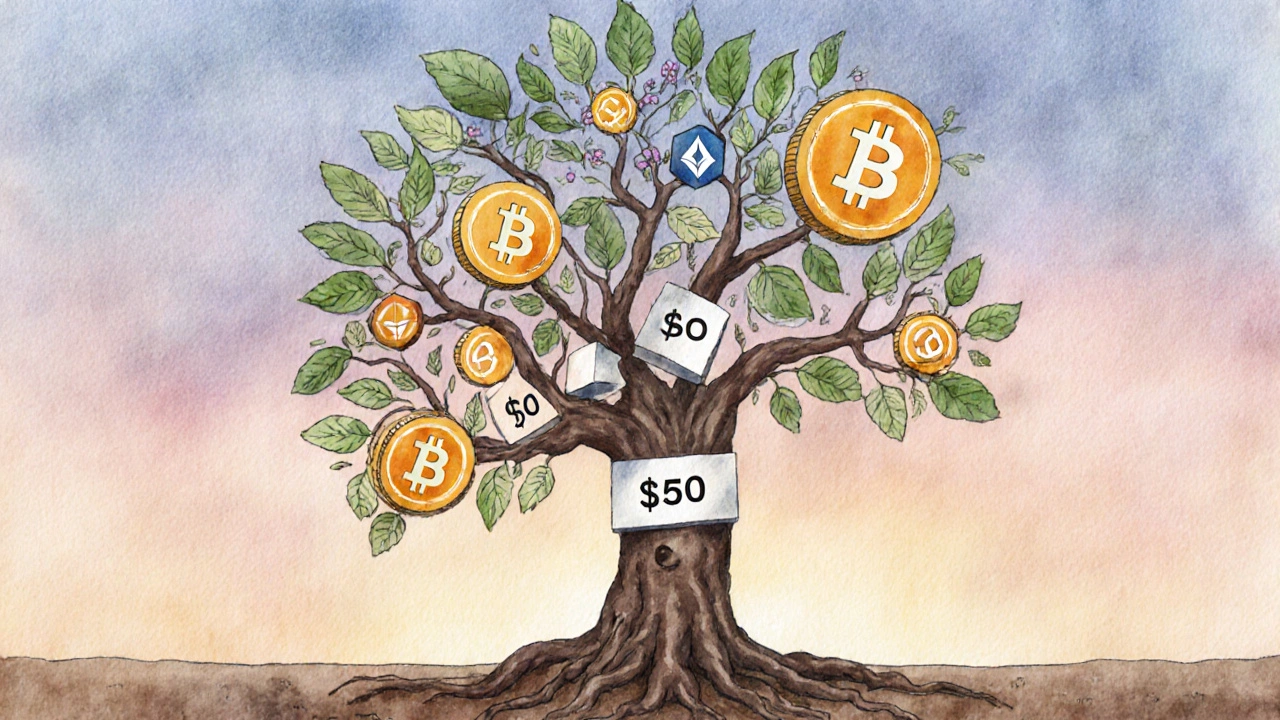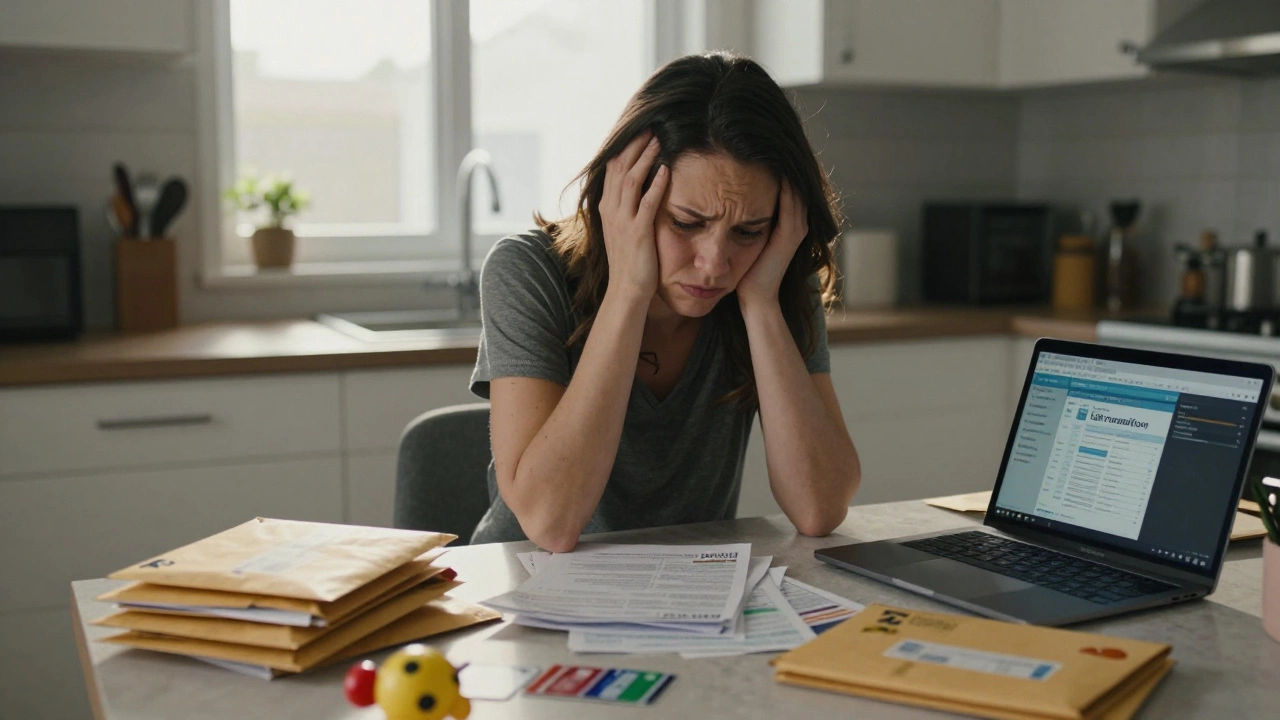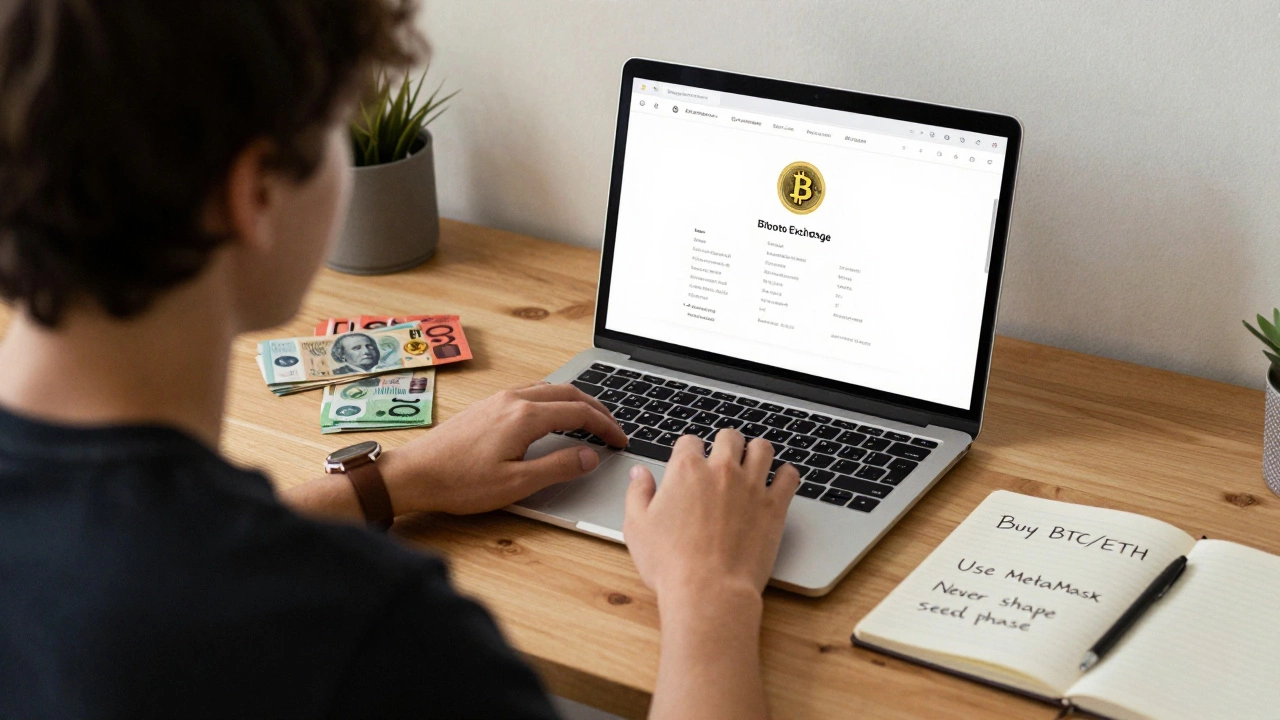Crypto Start Amount Calculator
How Much Should You Start With?
The right amount is what you can afford to lose without stress. This calculator helps you determine your ideal starting investment based on your financial situation and risk tolerance.
Your recommended starting investment amount will appear here after calculation.
Important Note
This calculator follows the industry-standard 5% rule for crypto investments. Remember: Never invest money you need for essentials like rent or groceries.
There’s no magic number when it comes to starting with crypto. You don’t need $1,000. You don’t even need $100. But you also shouldn’t throw in your entire paycheck. The real question isn’t how much money you have-it’s how much you can afford to lose without stressing out.
Start Small, But Start
A lot of people wait for the perfect moment to buy crypto. They think they need to wait until they’ve saved $500 or until Bitcoin drops below $50,000. That’s a trap. The market doesn’t wait. Neither should you.Most beginners start with $10 to $50. That’s it. You can buy a fraction of a Bitcoin, an Ethereum token, or even a small amount of Solana or Cardano with that. The goal isn’t to get rich overnight. It’s to learn how the system works-how wallets function, how exchanges operate, how transactions confirm, and how price swings feel in real time.
I know someone in Brisbane who started with $20. He bought $10 of Bitcoin and $10 of Ethereum. He didn’t touch it for six months. When he checked back, his $20 was worth $45. He didn’t cash out. He added another $20. That’s how real crypto investing begins-not with big bets, but with small, consistent steps.
Don’t Risk Money You Can’t Afford to Lose
This is the most important rule. Not the second. Not the third. The first.Crypto is volatile. Prices can swing 20% in a day. A coin you buy today could drop 60% in a month. That’s normal. That’s not a bug-it’s part of the system. If you’re investing money you need for rent, groceries, or an emergency fund, you’re playing with fire.
Here’s a simple test: If you lost the entire amount you’re thinking of investing, would it ruin your week? If yes, don’t do it. If you’d shrug and say, ‘Oh well, I’ll try again next month,’ then you’re in the right zone.
Most financial advisors suggest putting no more than 5% of your total investable assets into crypto. For someone with $10,000 in savings and investments, that’s $500. For someone with $2,000, that’s $100. For someone with $500? $25. That’s still enough to learn and potentially grow.
What You Can Actually Do With $10 to $100
Some people think small amounts don’t matter. They’re wrong.With $10, you can:
- Buy 0.0003 BTC (Bitcoin) - enough to see how the blockchain works
- Get 0.03 ETH (Ethereum) - lets you interact with simple DeFi apps
- Purchase 500 SOL (Solana) - gives you exposure to fast, low-cost transactions
- Buy 2,000 ADA (Cardano) - lets you stake and earn small rewards
These aren’t life-changing sums, but they’re real ownership. You’re not just reading about crypto-you’re holding it. You’re learning how to send it. How to store it. How to check your balance on a wallet app. That’s more valuable than any tutorial.
And here’s the kicker: if you start with $20 every month, you’ll have $240 in a year. If the market goes up 30% over that time, you’re up $72. Not bad for a few dollars a week.

What Not to Do With Your First Crypto Investment
There are three big mistakes beginners make-and they’re all avoidable.- Don’t chase memes. Dogecoin and Shiba Inu made headlines, but they’re gambling, not investing. You can buy a few dollars of them to see what the hype is about-but don’t bet your learning budget on them.
- Don’t use leverage. Borrowing money to buy crypto is dangerous. Even experienced traders get wiped out. If you’re new, treat every dollar like cash you’re holding in your hand.
- Don’t ignore security. If you buy crypto on an exchange, keep it there only for a few days. Move it to a wallet you control. Use a hardware wallet like Ledger or Trezor if you’re investing more than $500. For under $100, a reputable software wallet like Phantom or Trust Wallet is fine.
One person I know bought $50 of a new coin called ‘Doge2’ after seeing a TikTok ad. Two weeks later, the team vanished. His $50 was gone. He didn’t lose rent money-but he lost trust. Don’t be that person.
How to Build Up Over Time
Crypto isn’t a sprint. It’s a slow, steady climb.Here’s a realistic path:
- Month 1-3: Start with $10-$50. Buy one or two major coins (Bitcoin, Ethereum). Learn how to send and receive them.
- Month 4-6: Add $20-$50 per month. Try staking Ethereum or Cardano to earn small rewards (1-5% annual yield).
- Month 7-12: Rebalance. If one coin doubled, sell a little to lock in profit. Reinvest into something new you’ve researched.
- Year 2+: If you’ve saved $500-$1,000 total, consider a hardware wallet. Look into Bitcoin ETFs or regulated crypto savings accounts if you’re in Australia.
This isn’t about getting rich. It’s about building confidence. Every time you successfully send crypto to a friend or check your wallet balance after a price drop, you’re becoming smarter. That’s the real return.

Why This Works in 2025
Crypto has changed since 2021. It’s not just a wild gamble anymore. In Australia, platforms like CoinSpot, Swyftx, and Independent Reserve are regulated by ASIC. You can buy crypto with your bank account, set up recurring buys, and even pay bills with Bitcoin at some retailers.More banks now offer crypto custody. The government is working on clearer tax rules. Even the Reserve Bank of Australia is exploring a digital dollar. Crypto is becoming part of the financial system-not a fringe experiment.
That means starting small now gives you a real advantage. You’re not just buying coins-you’re learning the infrastructure of the next decade of finance.
Final Thought: It’s Not About the Amount
The best amount to start with crypto is the one that makes you feel curious, not scared.If you’re nervous, start with $5. Buy a fraction of Bitcoin. Watch what happens. Read one article a week. Talk to one person who’s been doing it for a year. Don’t rush. Don’t compare yourself to people who bought Bitcoin in 2017. You’re not behind. You’re just getting started.
There’s no perfect time. But there is a perfect first step: put in a little, learn a lot, and keep going.
Is $50 enough to start with crypto?
Yes, $50 is more than enough to start. You can buy small amounts of Bitcoin, Ethereum, or other major coins with that. The goal isn’t to make a big profit right away-it’s to learn how crypto works by actually using it. Sending, storing, and watching price changes with real money teaches you more than any video or article ever could.
Should I invest more if I have a bigger budget?
If you have more to invest, stick to the 5% rule: don’t put more than 5% of your total savings or investable assets into crypto. So if you have $20,000 saved, $1,000 is your max. Even then, start slowly. Put $200 in first, learn how it feels when prices drop, then add more over time. Bigger amounts don’t mean better results-they just mean bigger risks if you’re not ready.
Can I start with less than $10?
Yes. Some exchanges let you buy crypto for as little as $1. You can get a tiny fraction of Bitcoin or Ethereum with that. It won’t make you rich, but it will teach you how wallets work, how transactions are confirmed, and how to check your balance. That’s priceless for a beginner. Treat it like a practice run.
What’s the best crypto to start with?
For beginners, stick to Bitcoin and Ethereum. They’re the most established, have the most liquidity, and are supported by every major exchange. Avoid new tokens, meme coins, or obscure projects until you’ve held Bitcoin and Ethereum for at least six months. You need to understand the basics before exploring the edges.
Do I need to use a hardware wallet right away?
No. If you’re investing under $100, a trusted software wallet like Trust Wallet or Phantom is fine. Hardware wallets like Ledger or Trezor are for people holding $500 or more long-term. For beginners, focus on learning how to send and receive crypto safely. Worry about hardware wallets once you’re comfortable and your holdings grow.
Is crypto investing legal in Australia?
Yes. Crypto is legal in Australia. Exchanges like CoinSpot and Swyftx are regulated by ASIC, and you must report crypto gains on your tax return. The ATO treats crypto as property, so you pay capital gains tax when you sell or trade it for profit. But buying and holding? That’s completely legal and common.






